1. Cluttered or Overstuffed Spaces
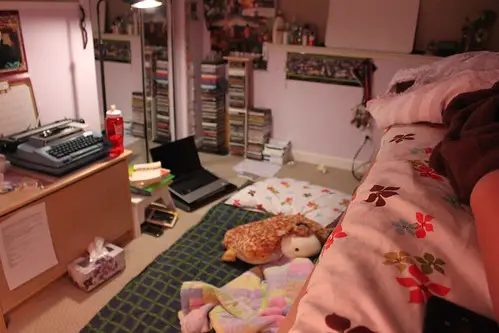
A bedroom overflowing with stuff can subconsciously stress your brain, even if you don’t consciously notice it. Visual clutter keeps your mind alert instead of winding down. You may associate the room with chores rather than relaxation. This can increase anxiety, making it harder to fall asleep and stay asleep.
Even small adjustments make a difference, like organizing surfaces and hiding away unnecessary items. Minimalist design isn’t just trendy—it supports sleep hygiene by calming the visual environment. Open floor space and tidy nightstands make the room feel restful. When your brain sees order, it signals that it’s safe to relax.
2. Overly Bright Overhead Lighting
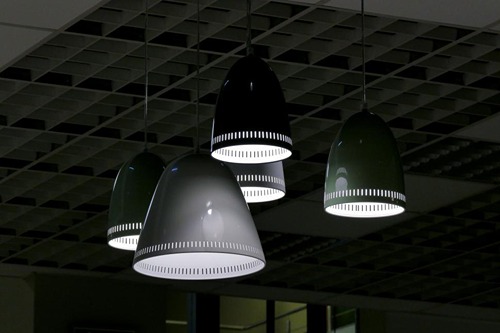
Harsh overhead lighting may make your bedroom feel sterile, and it can send the wrong signals to your brain at night. Bright white or cool-toned lights suppress melatonin, the hormone that helps you fall asleep. Even if you’re tired, stepping into a glaringly lit room can trick your body into thinking it’s still daytime. That makes winding down much harder than it should be.
Dim, warm lighting can make a huge difference, creating a cozy, sleep-friendly atmosphere. Table lamps, wall sconces, or string lights give you control over the brightness. Using multiple low-level light sources instead of one intense ceiling light can cue your brain that bedtime is approaching. It’s all about setting the mood for sleep, not a spotlight for your evening activities.
3. Loud or Uncontrolled Sound

A room that echoes or doesn’t block external noise can sabotage your sleep without you realizing it. Even low-level sounds from traffic, neighbors, or appliances can trigger micro-awakenings. Your brain interprets these as threats, which prevents deep restorative sleep. Soundproofing or white noise machines can help mask disturbances.
Ironically, some “quiet” rooms are actually acoustically dead, making sudden noises more jarring. Hard floors, bare walls, and minimal textiles amplify sound rather than absorb it. Soft furnishings like rugs, curtains, and upholstered furniture help keep the bedroom peaceful. Creating a controlled sound environment supports consistent sleep cycles.
4. Using Electronics in Bed

Watching TV, scrolling through a phone, or gaming in bed can seriously disrupt your sleep. Screens emit blue light, which delays melatonin production and tricks your body into thinking it’s daytime. The mental stimulation from content—news, social media, or action shows—also keeps your mind alert. Over time, this can create a cycle of poor sleep.
Even if you think you can “fall asleep after a few minutes,” your body may be struggling without you noticing. Reading printed books or listening to soothing music are better options. Creating a phone-free zone in your bedroom helps reinforce that it’s a space for rest. It’s all about sending clear signals to your brain that bedtime is serious.
5. Overly Stimulating Wall Colors
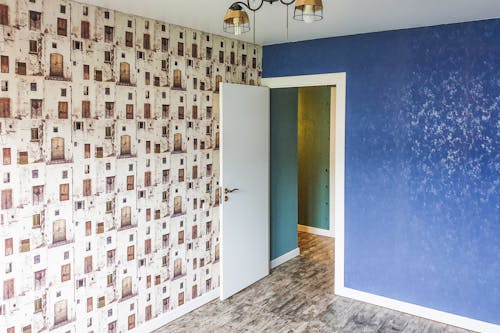
Bright reds, neon shades, or bold patterns might feel fun during the day but can be energizing at night. These colors trigger emotional and physiological responses, making relaxation difficult. Your bedroom should feel like a sanctuary, not a place that sparks adrenaline. Even artwork with busy, high-contrast designs can have a similar effect.
Softer, muted tones like pastels, earth tones, or soft blues encourage calm. These shades support a slower heart rate and lower blood pressure as bedtime approaches. You don’t have to strip your walls completely bare, but consider how colors affect mood. Color psychology isn’t just a trend—it’s a real factor in sleep quality.
6. Poor Mattress or Pillow Choices
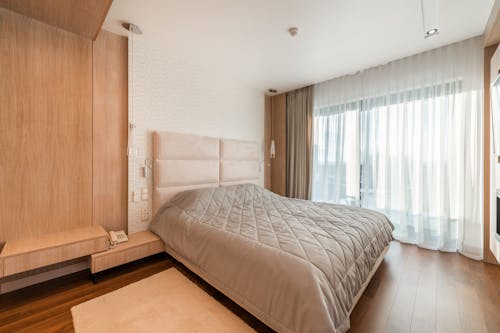
Sleeping on a mattress that’s too firm, too soft, or not supportive can leave you tossing and turning all night. Even if you’re exhausted, discomfort triggers micro-movements that fragment sleep. Pillows that don’t properly align your neck can cause pain and restless nights. The result is a bedroom that feels less like a retreat and more like a trap.
Finding the right mattress and pillow combination is highly personal but essential. Adjustable beds, memory foam, and ergonomic pillows can reduce pressure points and support proper alignment. Investing in sleep-focused bedding is an investment in long-term health. Comfort isn’t luxury—it’s biology.
7. Overheating or Too Cold

Temperature control is critical for sleep, yet many bedrooms ignore this factor. Being too hot or too cold interrupts the body’s natural temperature drop, which signals readiness for sleep. Night sweats, shivering, or tossing blankets all reduce sleep efficiency. Small fluctuations can leave you waking multiple times without realizing why.
Experts suggest keeping the bedroom around 65–68°F (18–20°C) for most adults. Lightweight bedding, breathable sheets, and adjustable thermostats help maintain this balance. Even ceiling fans or small space heaters can be strategically used to achieve ideal comfort. A bedroom at the right temperature encourages deeper, more restorative sleep.
8. Overuse of Heavy Scents

While some smells are calming, overdoing scented candles, air fresheners, or essential oils can actually be disruptive. Strong fragrances can irritate nasal passages, trigger allergies, or create sensory stimulation that keeps your brain alert. Some chemical air fresheners release compounds that may subtly interfere with sleep quality. Your bedroom should smell fresh, but not overpoweringly fragrant.
Subtle, natural scents like lavender can be helpful in moderation, but heavy or synthetic scents may backfire. Ventilation is key to avoiding trapped odors that make sleep uncomfortable. Simple solutions like washing bedding regularly or using mild natural scents are often enough. Overpowering smells compete with your body’s natural cues for rest.
9. Too Much Natural Light

Morning sunlight is great, but uncontrolled daylight can sneak in and wake you too early. If your bedroom faces east or south, early sun can disrupt deep sleep cycles. Light filters through eyelids even when your eyes are closed, subtly nudging your brain to wake. That makes hitting that “deep sleep phase” harder than it should be.
Blackout curtains, shades, or blinds can block intrusive light effectively. Even small adjustments, like covering gaps at the edges, help maintain a dark environment. Darkness signals your brain that it’s time for rest and melatonin production. A properly darkened room supports uninterrupted, restorative sleep.
10. Excessive Electronic Clutter

Even if you aren’t using them in bed, chargers, cables, and tech devices scattered around can affect sleep indirectly. Seeing gadgets and reminders of work or notifications keeps the mind subconsciously alert. This creates a subtle stress that prevents full relaxation. Your bedroom should feel like an escape, not a charging station.
Tidying up electronics, keeping wires out of sight, and designating a separate tech corner outside the bedroom help. Minimal electronic presence creates a visual cue for downtime. Your brain associates the room with rest, not multitasking. This small change can dramatically improve sleep onset and duration.
11. Overly Stimulating Patterns and Textures
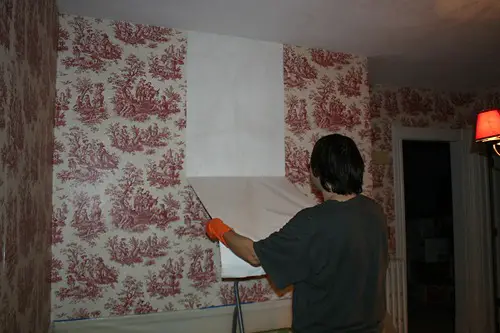
Bedspreads, rugs, or curtains with busy patterns might look stylish, but they can overload visual perception at night. Patterns with high contrast or repetitive motion can subtly keep your mind engaged. Similarly, extremely rough or irritating textures can make your body tense. Both disrupt the natural winding-down process that sleep requires.
Opt for smooth, soft textiles in calming colors or simple designs. Cotton, linen, or lightly textured fabrics allow tactile comfort without sensory overstimulation. Less is more when it comes to textures in a sleep-focused bedroom. Your body will relax naturally when it doesn’t feel “alert” to patterns or touch.
12. Using the Bedroom for Multiple Activities

When the bedroom doubles as an office, gym, or entertainment hub, your brain associates it with activity, not rest. This can confuse your body’s internal sleep-wake cues. Even reading or working in bed occasionally can make it harder to fall asleep at night. The result is a bedroom that constantly reminds you of tasks rather than rest.
Creating a single-purpose sleep sanctuary reinforces the mental boundary for rest. Bed = sleep, period. If you must work or exercise at home, designate a different room entirely. Maintaining this separation strengthens your sleep habits and overall well-being.
This post 12 Bedroom Design Choices That Actually Disrupt Sleep was first published on Greenhouse Black.
